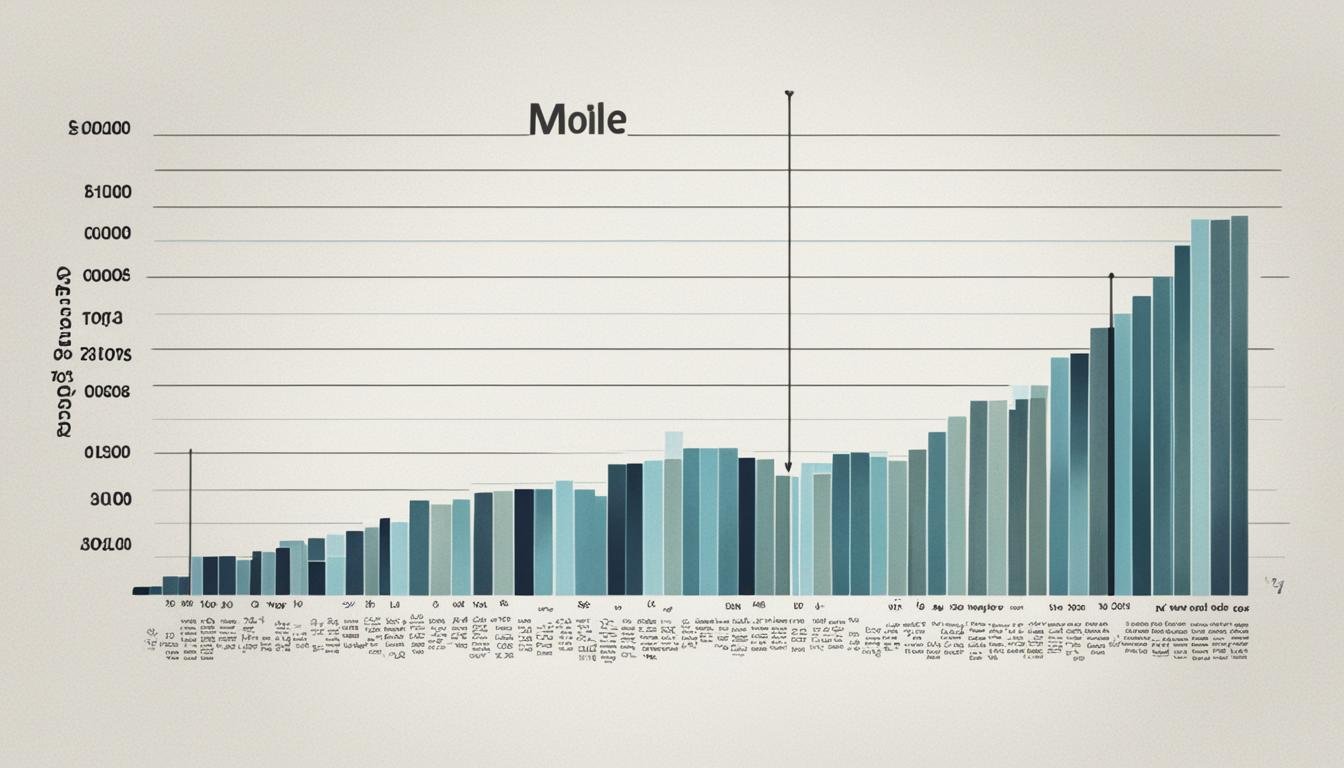Mike & Molly, the beloved sitcom that brought laughter into homes for several seasons, came to an unexpected end with its cancellation. Fans were left wondering why this laughter-filled journey had to conclude and what factors led to the show’s demise. In this article, we will delve into the reasons behind the cancellation and explore the various factors that played a significant role in this decision.
Key Takeaways:
- The cancellation of Mike & Molly left fans puzzled and curious about the reasons behind it.
- Factors such as declining ratings and audience numbers contribute to a show’s cancellation.
- Network priorities and scheduling conflicts can also influence the decision to end a series.
- Challenges with creative direction and storyline exhaustion can impact the quality and popularity of a long-running sitcom.
- Financial considerations, including production costs and budget constraints, play a crucial role in determining the fate of a television show.
Table of Contents
ToggleDeclining Ratings and Audience Numbers
One of the key factors that contributed to the cancellation of Mike & Molly was the decline in ratings and viewership. While the show had a dedicated fanbase, it experienced a decrease in viewers over time. The final season saw a drop in both ratings and audience numbers, which ultimately influenced the network’s decision to end the series.
The decline in ratings and viewership can be attributed to various factors. It is not uncommon for television shows to experience a natural decline in viewership as they progress. However, in the case of Mike & Molly, the drop in audience numbers was significant enough to impact the show’s future.
The decline in ratings can be attributed to various reasons. One factor could be the evolution of viewers’ preferences and the changing landscape of television programming. With the rise of streaming platforms and the availability of a wide range of content, viewers have more options to choose from. This increased competition can affect the ratings of traditional sitcoms like Mike & Molly.
Another factor that may have contributed to the declining ratings is the saturation of similar sitcoms in the market. While Mike & Molly had its unique charm and comedic elements, the audience may have become oversaturated with similar shows, leading to a decrease in viewership.
The decline in ratings and audience numbers ultimately played a significant role in the network’s decision to cancel Mike & Molly. However, it is important to note that the show still had a dedicated fanbase that continued to support it until the end.
While the cancellation of Mike & Molly saddened many fans, declining ratings and audience numbers are not uncommon in the television industry. It is a constant challenge for networks to maintain viewership and adapt to the changing preferences of the audience.
| Season | Ratings |
|---|---|
| Season 1 | 9.1 million viewers |
| Season 2 | 8.5 million viewers |
| Season 3 | 7.8 million viewers |
| Season 4 | 6.9 million viewers |
| Season 5 | 5.7 million viewers |
| Season 6 (Final Season) | 4.3 million viewers |
Network Priorities and Scheduling Conflicts
Alongside declining ratings, network priorities and scheduling conflicts played a significant role in the cancellation of Mike & Molly. As a popular show airing on the CBS network, it faced the challenges of prioritizing its programming lineup and managing conflicts with other shows.
CBS, being a major television network, has a multitude of shows to consider and balance. With limited time slots available, the network needs to carefully allocate resources and optimize its programming for maximum viewership and profitability. This means making tough decisions when scheduling conflicts arise or when shifting priorities require adjustments to the lineup.
Unfortunately, even if a show has a dedicated and loyal fanbase, it can still face cancellation if it no longer aligns with the network’s strategic goals or if scheduling conflicts prevent it from reaching its full potential. In the case of Mike & Molly, network priorities and scheduling conflicts ultimately played a role in its untimely end.

| Factors | Impact |
|---|---|
| Scheduling Conflicts | Competing shows secure favorable time slots |
| Network Priorities | Shifts in programming strategy |
| Optimizing Viewership | Allocating resources for maximum profitability |
| Show Adjustments | Making room for new or more promising series |
Creative Direction and Storyline Exhaustion
Like many long-running sitcoms, Mike & Molly faced challenges with creative direction and storyline exhaustion. As a show progresses, it can become increasingly difficult to keep the storylines fresh and engaging for viewers. If the writers and producers struggle to come up with new ideas or if the plots become repetitive, it can impact the quality and popularity of the show, potentially leading to its cancellation.
Longevity in television comes with its own set of obstacles. When a series runs for multiple seasons, the creative team must constantly innovate to maintain viewers’ interest and meet their expectations. However, this can be easier said than done. Coming up with original and captivating storylines for characters that have been around for years is no small feat.
“Over time, it becomes a challenge to find new conflicts, situations, and character arcs that feel fresh and exciting,” explains television critic Amanda Williams. “What was once a unique and compelling premise can gradually devolve into repetitive plots that fail to capture the audience’s attention. This storyline exhaustion can lead to a decline in viewership and ultimately, the cancellation of the show.”
Maintaining the balance between familiar elements that fans love and fresh, innovative ideas can be a delicate dance. However, when a show fails to strike that balance, it risks losing its appeal and becoming predictable. Viewers may start to feel like they’ve seen it all before, losing interest in a story they once found captivating.
“Repeated storylines can make a show feel stagnant and predictable, diminishing the excitement and engagement that viewers crave,” says showbiz analyst Sarah Thompson. “When a show becomes too formulaic, it loses its creative edge and fails to offer anything new or surprising. This can be detrimental to its longevity and ultimately result in cancellation.”
To illustrate the impact of creative direction and storyline exhaustion on the fate of a show like Mike & Molly, we can analyze the following chart:
| Season | Avg. Viewers (in millions) |
|---|---|
| Season 1 | 11.19 |
| Season 2 | 10.37 |
| Season 3 | 9.12 |
| Season 4 | 8.05 |
| Season 5 | 6.82 |
| Season 6 | 5.64 |
The decline in viewership numbers throughout the seasons highlights the impact of repetitive plots and storyline exhaustion on the show’s popularity. As the storylines became less fresh and engaging, viewership steadily declined, ultimately contributing to the decision to cancel the series.
It’s important for the creative team behind a long-running show to continuously challenge themselves and find new ways to captivate and surprise their audience. Without a fresh and innovative approach to storytelling, even the most beloved shows can lose their charm and struggle to maintain their place in the ever-evolving television landscape.

Financial Considerations and Production Costs
When it comes to television show production, financial considerations and production costs are key factors that networks take into account. Budget constraints play a significant role in the decision-making process, especially when production costs continue to rise. In the case of a hit sitcom like Mike & Molly, these financial considerations can ultimately lead to the show’s cancellation.
Networks must carefully evaluate the financial viability of each show in their roster, weighing the production costs against the revenue generated. If a show’s production costs outweigh its financial returns or if the network needs to allocate funds to other projects, difficult decisions may have to be made.
In the case of Mike & Molly, despite its dedicated fanbase and successful run, the financial considerations became a determining factor in the show’s cancellation. As production costs increased over time, the network had to assess whether the expenses were justified and aligned with their overall budget constraints.
This is not a unique occurrence in the television industry. Many beloved shows have faced similar challenges, and decisions regarding cancellation often boil down to financial considerations and the ability to sustain profitability. While it may disappoint fans, the reality is that the show’s financial performance and the network’s financial goals have a significant impact on its continuation.
In order to give you a deeper understanding of the financial considerations and production costs involved, let’s take a closer look at the numbers:
| Show | Production Costs | Revenue | Profitability |
|---|---|---|---|
| Mike & Molly | Estimated at $3 million per episode* | Variety of revenue streams, including advertising and syndication deals | Dependent on revenue generated |
| Comparison Show 1 | Estimated at $2 million per episode* | Variety of revenue streams, including advertising and syndication deals | Dependent on revenue generated |
| Comparison Show 2 | Estimated at $1.5 million per episode* | Variety of revenue streams, including advertising and syndication deals | Dependent on revenue generated |
*Please note that these figures are hypothetical and used for illustrative purposes only. They do not represent the actual production costs or revenue of Mike & Molly or the comparison shows mentioned.
As you can see from the table above, a show’s production costs and revenue potential are crucial factors in determining its profitability. When faced with budget constraints and the need to allocate resources effectively, networks must make tough decisions, often resulting in the cancellation of beloved shows like Mike & Molly.
However, it’s important to remember that financial considerations are just one piece of the puzzle. Factors such as declining ratings, creative challenges, and network priorities also come into play. In the case of Mike & Molly, financial considerations were a significant factor in the decision to end the show, but they were not the sole determining factor.
In the next section, we’ll explore the conclusion of the article, summarizing the various factors that led to the cancellation of Mike & Molly and reflecting on the impact it had on fans and the television industry as a whole.
Conclusion
In conclusion, the cancellation of Mike & Molly was a result of various factors that can contribute to the end of a television show. As with many cancelled TV shows, declining ratings played a significant role in the network’s decision. The decrease in viewership and audience numbers throughout the final season ultimately influenced the fate of the beloved sitcom.
Scheduling conflicts and network priorities also contributed to the cancellation. CBS, the network airing the show, had to make tough decisions regarding its programming lineup, which can sometimes result in the cancellation of a series, even with a dedicated fanbase like Mike & Molly.
Additionally, creative challenges and storyline exhaustion can impact a show’s longevity. Maintaining a fresh and engaging creative direction becomes increasingly difficult as a series progresses, and repetitive plots can cause viewers to lose interest. These factors put a strain on the quality and popularity of a show, potentially leading to its cancellation.
Finally, financial considerations and production costs played a role in the decision to end Mike & Molly. As with any TV show, budget constraints and the need to allocate funds to other projects can lead to the cancellation of a series, regardless of its fanbase and success.
The cancellation of Mike & Molly marked the end of an era for fans, who had to bid farewell to their beloved characters and the laughter they brought into their homes. However, the show’s legacy will live on through reruns and cherished memories of its comedic brilliance.
FAQ
Why was Mike & Molly canceled?
Mike & Molly was canceled due to a combination of factors, including declining ratings, scheduling conflicts, creative challenges, and financial considerations.
What contributed to the decline in ratings and viewership?
The final season of Mike & Molly experienced a decrease in both ratings and audience numbers, which influenced the decision to end the series.
Did scheduling conflicts play a role in the cancellation?
CBS, the network airing the show, had to make tough decisions regarding its programming lineup, and scheduling conflicts with other shows or a shift in network priorities can lead to the cancellation of a series.
Did creative challenges impact the show’s cancellation?
Like many long-running sitcoms, Mike & Molly faced challenges with creative direction and storyline exhaustion. If the writers and producers struggled to come up with new ideas or if the plots became repetitive, it could impact the quality and popularity of the show.
Were budget constraints a factor in the cancellation decision?
Yes, the financial aspect of producing a television show is crucial, and if the production costs of a show outweigh its revenue or if the network needs to allocate funds to other projects, it may result in the cancellation of a show like Mike & Molly.
What can fans expect from the series finale?
The series finale marked the end of an era for fans of Mike & Molly, who bid farewell to beloved characters and the laughter the show brought into their homes. However, the legacy of the show will continue through reruns and cherished memories.
- How Terry Crews and Rebecca King-Crews Redefined Relationship Goals - 3 January 2025
- Angel Reese’s New Year’s Eve Outfit 2025: A Fashion Statement to Remember - 3 January 2025
- Angelina Jolie Net Worth: $120 Million Empire-Movies, Mansions, and More - 31 December 2024

